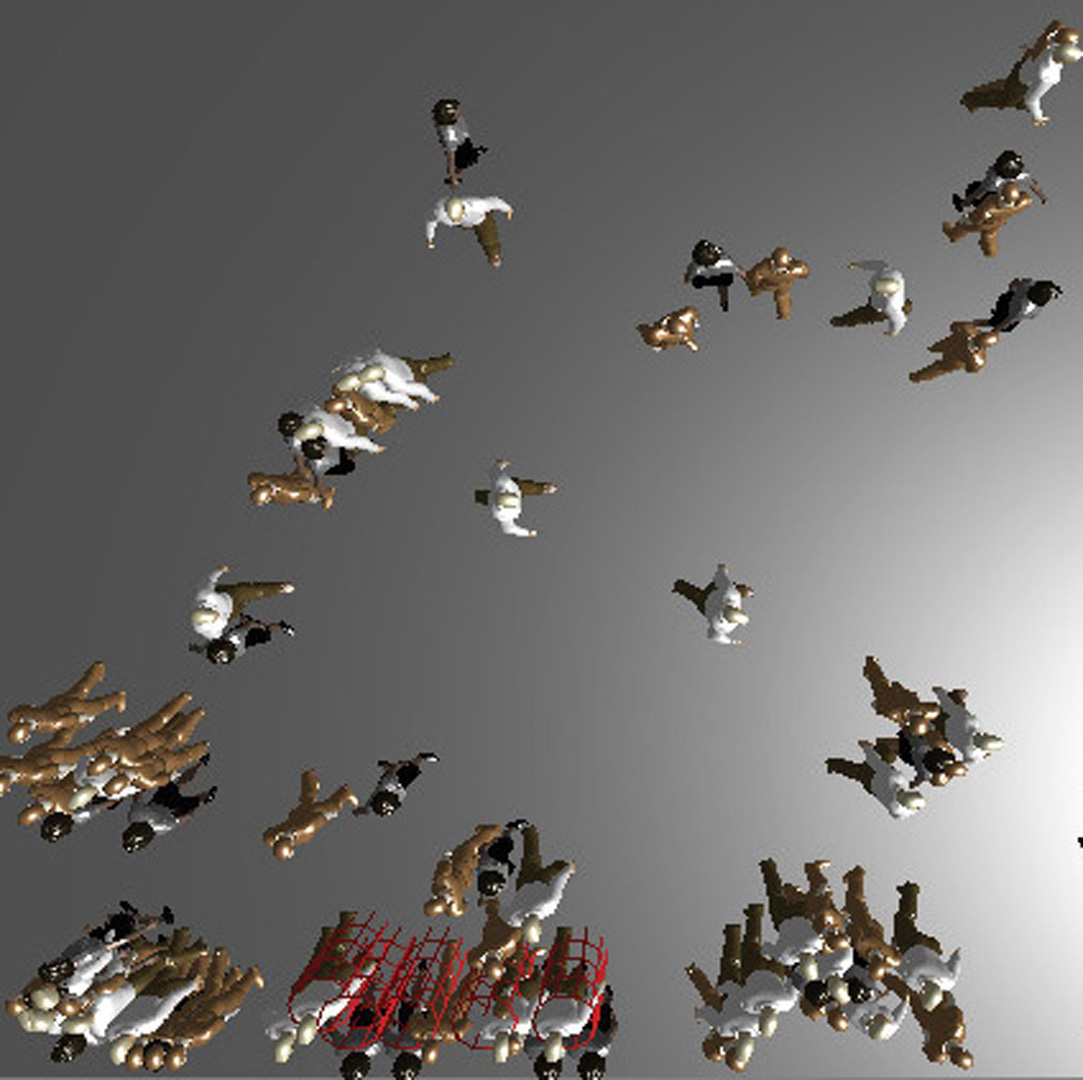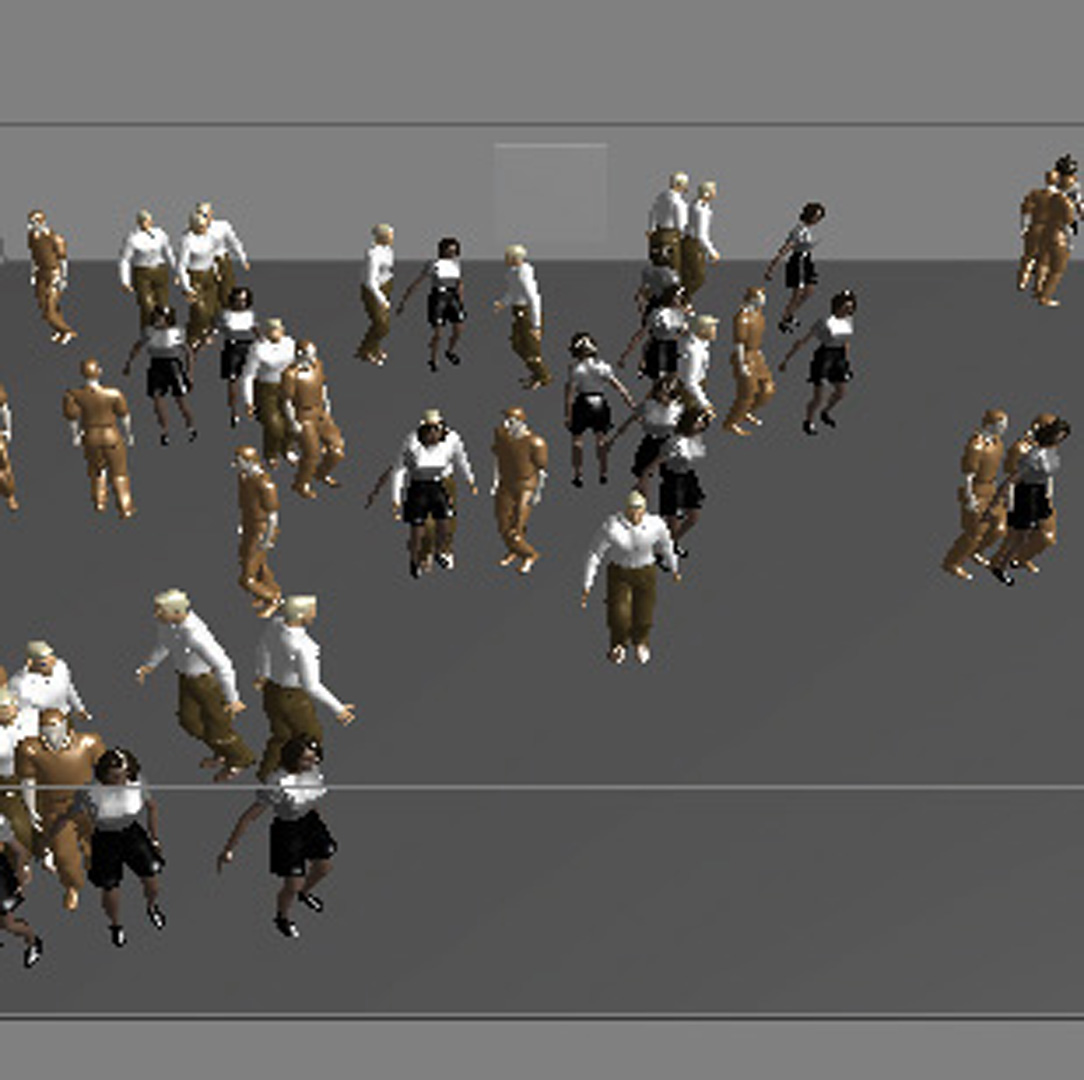“SocioCrowd: a social-network-based framework for crowd simulation” by Le, Hsieh, Lin and Kuo
Conference:
Type(s):
Entry Number: 17
Title:
- SocioCrowd: a social-network-based framework for crowd simulation
Presenter(s)/Author(s):
Abstract:
The goal of crowd simulation is to produce potential collective behaviors by simulating the movement process of a number of characters or agents. Some famous models are proposed to simulate crowd, including social force (e.g. [Helbing 2000]), cellular automata (e.g. [Chenny 2004]), and rule-based models (e.g. [Reynolds 1987]). Others use physiological (e.g. locomotion, energy level) and psychological (e.g. impatience, personality attributes) traits of agents to trigger heterogeneous behaviors [Pelechano 2007]. However, existing approaches do not consider the real-world social interactions among agents, and thus are unable to produce social-dependent scenarios. In this work, we propose to leverage the underlying social network, which captures social relationships among agents, for crowd simulation. A novel social-network-based framework, SocioCrowd, is developed (figure 1(a)) shows the virtual world). Based on SocioCrowd, we simulate three social-based scenarios, including community-guided flocking, following leading persons, and spatio-social information spreading. They display certain real-world social behaviors which are hardly modeled by existing methods. To lift the performance, our SocioCrowd is implemented by pure Java with GPU programming in ways of GSGL and JCUDA.
References:
Chenney, S. 2004. Flow Tiles. ACM SIGGRAPH/Eurographics Symposium on Computer Animation 2004. 233–242. Google ScholarDigital Library
Helbing, D., Farkas, J., and Vicsek, T. 2000. Simulating dynamical features of escape panic. Nature, 407, 487–490.Google Scholar
Kempe, D., Kleinberg, J., and Tardos E. 2003. Maximizing the spread of influence through a social network. ACM SIGKDD 2003, 137–146. Google ScholarDigital Library
Newman, M. E. J. 2004. Fast algorithm for detecting community structure in networks. Physical Review, E 69, 066133.Google Scholar
Pelechano, N., Allbeck, J. M., and Badler N. I. 2007. ACM SIGGRAPH/Eurographics Symposium on Computer Animation 2007, 99–108. Google ScholarDigital Library
Reynolds, C. W. 1987. Flocks, herds and schools: A distributed behavior model. ACM SIGGRAPH 1987, 25–34. Google ScholarDigital Library
Wasserman, S. and Faust, K. 1994. Social network analysis. Cambridge University Press.Google Scholar
Additional Images:






